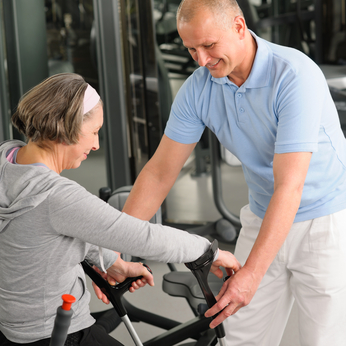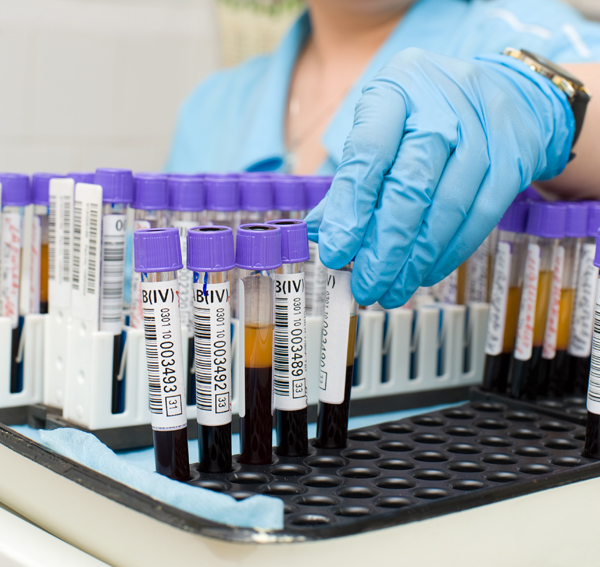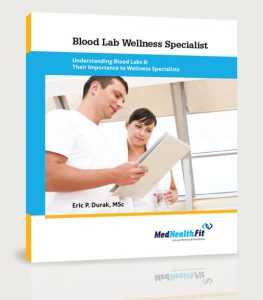Cancer Wellness Within Healthcare – A Date With Destiny
There are three distinct areas of exercise as it relates to healthcare – and reimbursement. Most trainers and fitness professionals are aware of cardiac rehab, which actually began in the US in the 1960s, but gained ground as a reimbursable health care service in the 1980s. At that time there was a lot of good exercise and sports medicine research available in peer reviewed publications, and there was a push on the part of health care to include cardiac rehab as part of rehab and health promotion services. The fact that most cardiac programs were reimbursed up to 36 sessions was a plus.
The second area of healthcare that is relatively new is the Silver Sneaker’s program – started in Arizona in 1994, it quickly grew to the nation’s leading reimbursable wellness program for seniors. It was accepted by Medicare Plus

Choice, and a host of other health plans across the nation – so that within a few years of its inception, seniors from anywhere in the US could take advantage of free exercise and health classes at area health clubs, YMCAs, and JCCs. The program was recently sold to Healthways health systems from Nashville for over $400 million – a testament to the interest of such programs within the healthcare industry.
The third area is the use of exercise therapy in worker’s compensation programming. Over the past decade there are some significant programs implemented that contract with large employer groups and HMOs to use exercise both in a preventive and therapeutic format. These programs include strength and aerobic training geared to improve functional strength, reduce WC costs and reduce lost work days. Clearly these areas of clinical exercise have set a precedent regarding both the use of fitness programs in healthcare, and reimbursement for these programs through third parties.
Enter Cancer Wellness. There were few programs for cancer survivors for any type of health program in the early 1990’s. A few health clubs and hospitals had specialty exercises for persons with cancer, but programs really started to grow when Dr. Meryl Winningham from University of Utah began publishing the first sports medicine research in the field in the 1980’s (which became more widely read in the mid 1990’s), and champion cyclist Lance Armstrong made his remarkable comeback from cancer in the late 1990’s. Over the past decade the number of health clubs and hospital wellness centers that offer cancer exercise programs has grown exponentially. There are now hundreds of programs in existence nationally – in clubs, private training centers, Pilates studios, and hospitals. More are interested, but the main question remains – is this program reimbursable?
For those in health promotion who haven’t noticed – reimbursement has changed dramatically in the past 10 years. Programs that historically received reimbursement (such as cardiac rehab), have been cut dramatically (while, ironically, cardiac operations and prescription medication costs have escalated three-fold). However – that doesn’t mean that reimbursement doesn’t exist for health programs, you just have to know where to look. An example is smoking cessation classes. Instructed by counselors and physician assistants, most of the reimbursement for these classes (and nicotine replacement therapy) is funded by state tobacco settlement grants and initiatives, which is very helpful in terms of passing along savings to patients.
Is reimbursement possible for cancer wellness? Select groups from areas in the US are working with local health plans, or pharmaceutical companies to capture their markets in terms of offerings to patients. For those who are interested in looking towards reimbursement for their program – here is some advice for getting started:
- Find out how many persons in your region are cancer survivors. Your local cancer treatment center should have statistics. Most areas have well over 1,000 new cases per year. You may also market to persons who have had cancer diagnosed years before. They may still attend support groups, or be on mailing lists from the same cancer centers.
- Establish a relationship with a local oncologist or treatment center. You may be able to hold exercise programs on-site and bill through your community local oncology or rehab clinic. This is similar to billing for group therapy or physical therapy. However – it should be remembered that this is a wellness program, and there are specific wellness codes that physicians and billing departments can bill under.
- Know your billing codes. In order to receive any form of reimbursement – you should know the system you are working in. There are resources that may assist you in learning coding for wellness programs, and you should take advantage of them (see resource section).
- Know what outcomes you are interested in reporting. For many cancer patients, a reduction in lymphedema, less pain and fatigue, and increases in fitness parameters are an excellent way to show that the program is working well. Improving these outcomes will also boost attendance, which is another important aspect of the program (compliance).
- Look for local sponsors. A proposal to local pharmaceutical reps may increase your odds of receiving reimbursement – through a third party such as a pharma company. They often set aside money in their budgets for health programs, and cancer wellness may fit the bill very well.
 What to do once you’re up and running? In the first year it’s important to have a working budget. This may only lend itself to 3-5 patients coming to your program to start. Once they experience the benefits of exercise and wellness, they will quickly tell their fellow patients. It’s also important to spread the word via small group lectures and fitness demonstrations. Since most cancer centers have monthly support groups, it’s a great place to conduct a 30 minute lecture and demonstration for local survivors. Next – a couple of sample articles for the local newspaper (perhaps a series) on the benefits of exercise for cancer survivorship. There are new research reports out each month. Lastly – call your local radio show and book a time to discuss exercise for cancer survivorship. They would love to have a topic like this for their time slots.
What to do once you’re up and running? In the first year it’s important to have a working budget. This may only lend itself to 3-5 patients coming to your program to start. Once they experience the benefits of exercise and wellness, they will quickly tell their fellow patients. It’s also important to spread the word via small group lectures and fitness demonstrations. Since most cancer centers have monthly support groups, it’s a great place to conduct a 30 minute lecture and demonstration for local survivors. Next – a couple of sample articles for the local newspaper (perhaps a series) on the benefits of exercise for cancer survivorship. There are new research reports out each month. Lastly – call your local radio show and book a time to discuss exercise for cancer survivorship. They would love to have a topic like this for their time slots.
The initial year is a “make or break” one for survivor programs. In my experience with many of my national programs – those that got some funding, and did some promotion have programs that have grown. Those who relied solely on patient membership fees in many cases have not been able to grow their programs. Funding is important, and reimbursement may be a part of patient’s health plans, so it would benefit you to contact local health plan reps to see if they cover the cost of post rehab exercise, and/or health club membership for their members.
Cancer Wellness is one of a handful of growing wellness programs in this country that health specialists AND physicians are looking to for avenues of increased reimbursement, or sponsorship. There are many local and regional resources (cancer treatment centers, non profit organizations and foundations, pharmaceutical companies, and regional HMOs) that may be interested in funding such programs. It is up to you to start looking for financing as you start your education program. This will ensure future success at both the educational AND financial levels.
Written by Eric Durak, Medical Health and Fitness ©2011-2014. Eric Durak is the President of Medical Health and Fitness, and Director of the Cancer Wellness CEU Program in Santa Barbara, CA. He is also the author of The Reimbursement Book for Health and Fitness Instructors . Contact him at edurak@medhealthfit.com / 805-451-8072. www.medhealthfit.com
References
Durak, EP. The important link between exercise and cancer. ACE Matters. Pg. 13, Sept. 1999
Author – Exercise reduces cancer treatment side effects. Health News. 12(9):pg.8, 2006
Jones, LW, Denmark-Wahnefried, W. Diet, exercise, and complementary therapies after primary treatment for cancer. Lancet Oncology. 7(12):1017-26, 2006.
Korstjens, I, Mesters, I, et al. Quality of life of cancer survivors after physical and psychosocial rehabilitation. European Journal of Cancer Prevention. 15(6): 541-7, 2006.





 While it may not mean too much for medical fitness professionals today – it should. There are two reasons. Even though Theranos is not the top dog in the blood lab industry now – they have changed the way we think of blood labs in general.
While it may not mean too much for medical fitness professionals today – it should. There are two reasons. Even though Theranos is not the top dog in the blood lab industry now – they have changed the way we think of blood labs in general. How will this come to pass? In my conversations with Dr. Brandman – we are working on two fronts. First is to enhance the education of health and wellness professionals as a whole. The Blood Lab Wellness Specialist course was launched in February of 2016, and it allows heath and wellness professionals to have a baseline understanding of the blood lab process. Second – StepOne Health will be creating a referral-based system whereby Medical Fitness Professionals and coaches can directly refer clients to the StepOne Health portal and become part of the referral family. This will include discount rates on blood panels, referral fees for professionals, genomic testing profiles, and online coaching when needed. In my opinion, it is the single most important step in bringing wellness and fitness into today’s health care system as any single faction.
How will this come to pass? In my conversations with Dr. Brandman – we are working on two fronts. First is to enhance the education of health and wellness professionals as a whole. The Blood Lab Wellness Specialist course was launched in February of 2016, and it allows heath and wellness professionals to have a baseline understanding of the blood lab process. Second – StepOne Health will be creating a referral-based system whereby Medical Fitness Professionals and coaches can directly refer clients to the StepOne Health portal and become part of the referral family. This will include discount rates on blood panels, referral fees for professionals, genomic testing profiles, and online coaching when needed. In my opinion, it is the single most important step in bringing wellness and fitness into today’s health care system as any single faction.